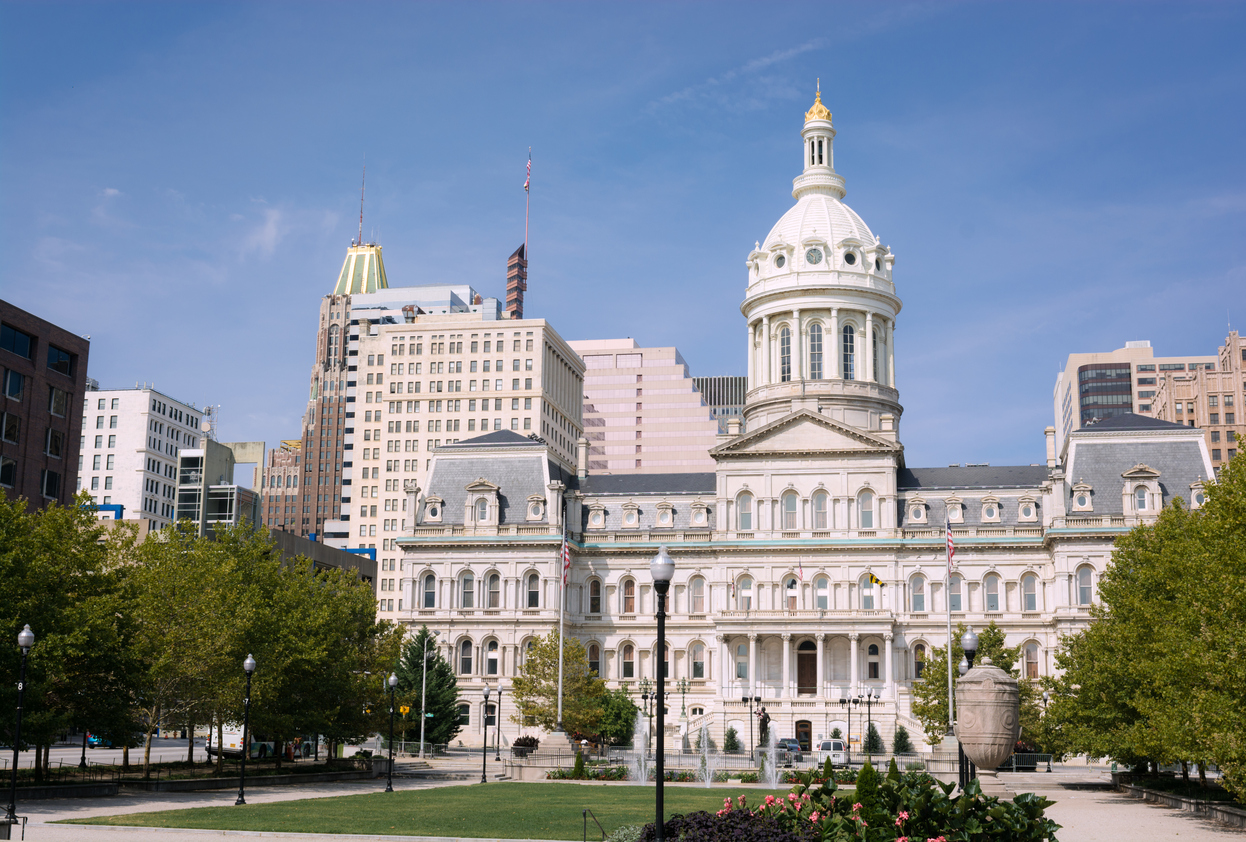
Baltimore Mayor’s State of the City address outlines plans for growth and stability in spite of federal uncertainties
Originally published on WYPR 88.1FM Baltimore
In his first State of the City speech of his second term, Baltimore Mayor Brandon Scott promised continued growth and stability in the face of a tight state budget and uncertainty over actions by the federal government.
Thunderous applause roared from the crowd of the city’s elected and cultural leaders gathered at the M&T Bank Exchange when Scott announced that the city’s homicide rate is at its lowest in 50 years.
In his address, themed “Built Different, Building Different,” Scott says that is the type of progress Baltimore City progress needs to keep growing.
“There is no city in the world like ours,” said Scott. “Baltimore is built different. So, we have to build different. We have to build the Baltimore way, by leaning into our strengths, our grit and our charm and not shying away from our challenges.”
In the nearly hour-long speech, Scott promised further reductions in violence, boasted fewer vacant buildings (down to below 13,000 from 16,000 when Scott took office in 2020), and new project approval timelines to get businesses, homes, and renovations done quicker.
Scott acknowledges that plans to grow city programs like youth job training and build new recreation centers will be tough without federal support. But the mayor promises that won’t change his focus.
“Call us the D.E.I. Capital of the United States. Call us whatever you like. We are never gonna apologize for investing in the people of our city,” said the mayor when talking about equity and efforts to close gaps caused by systemic disinvestment.
In his opening remarks, Council President Zeke Cohen sent a similar message.
“In this moment of chaos coming from Washington, our city is writing the greatest comeback story in American history,” said the first-term president. “While they ban books in Baltimore, we build libraries.”
Property Taxes
One anticipated highlight of Scott’s forward looking speech is his plan to reduce property taxes. Baltimore City has the highest property tax rate in Maryland at $2.25 per $100 of assessed value. As part of Scott’s soon to be unveiled ten-year financial plan, the mayor announced during his speech that he will reduce property taxes to under $2 by 2028.
“We want everybody to come to Baltimore and stay in Baltimore,” he said. Property taxes have often been cited as a reason city residents leave for nearby counties. This year was the first in decades where Baltimore City actually saw some population growth rather than loss. High property taxes have been a continuous pressure point for Baltimore residents. Last year, a coalition called Renew Baltimore successfully petitioned for a ballot question that would slash the city’s property tax rate in half over the course of seven years - although ultimately Maryland’s Supreme Court shut that down.
Stephen Walters, an economist with the Maryland Public Policy Institute, worked on that measure and is cautiously optimistic that the mayor’s plan could encourage some growth, especially if the changes are enshrined permanently in the city’s charter.
“When you talk about the property tax, you're talking about a tax on structures that are going to have a 50 to 100 year life. So you're looking at a fairly long time frame here when you're making those investments,” he said.
He called the plan a good step in the right direction in terms of encouraging growth adn competition.
Education
One area where the mayor recognizes need for improvement is education. President Donald Trump used low performance scores in Baltimore City schools as an example of why the federal Department of Education should be dismantled. While Scott noted that reading and Kindergarten readiness have improved, he promised more work for the future.
“We are working alongside City Schools to meet two goals: To increase the percentage of students who are reading and writing on grade level over 10 percent by 2027. And more than double the percentage of students on grade level for math in that time,” he said.
Other notable highlights
MOACE is the latest acronym in the alphabet soup at City Hall, standing for the Mayor’s Office of Arts, Culture, and Entertainment. As he explained to reporters last week, it is not quite a one to one replacement of BOPA (The Baltimore Office for the Promotion of Arts).
MOACE will be a “resource” for local artists and creatives while also having a hand in the city’s live events.
Scott also announced that the city’s Tele911 service will be expanding. “So if paramedics respond to a call that doesn’t require emergency care... They can connect individuals to telehealth services, on the spot,” explained the mayor.
Scott has been vocal over the last year about his $3 billion strategy to reduce vacant housing and lots. That plan now has a name: Reframe Baltimore. Residents and developers can visit the newly launched website for resources.
Financially, tough choices could be ahead, the mayor warned. His speech offered little detail in how to pay for new programming although he does promise no additional raise on income tax.
New city programs require new people to work them, Mayor Scott encourages laid off federal workers to apply.





